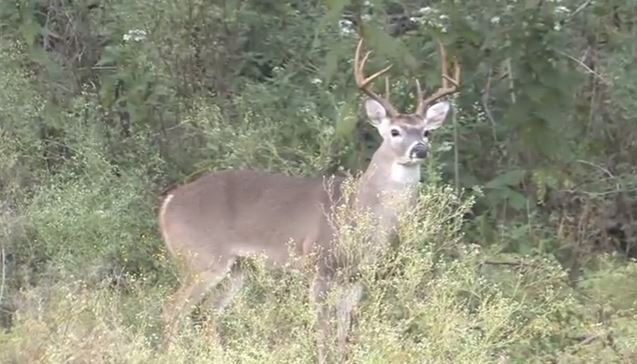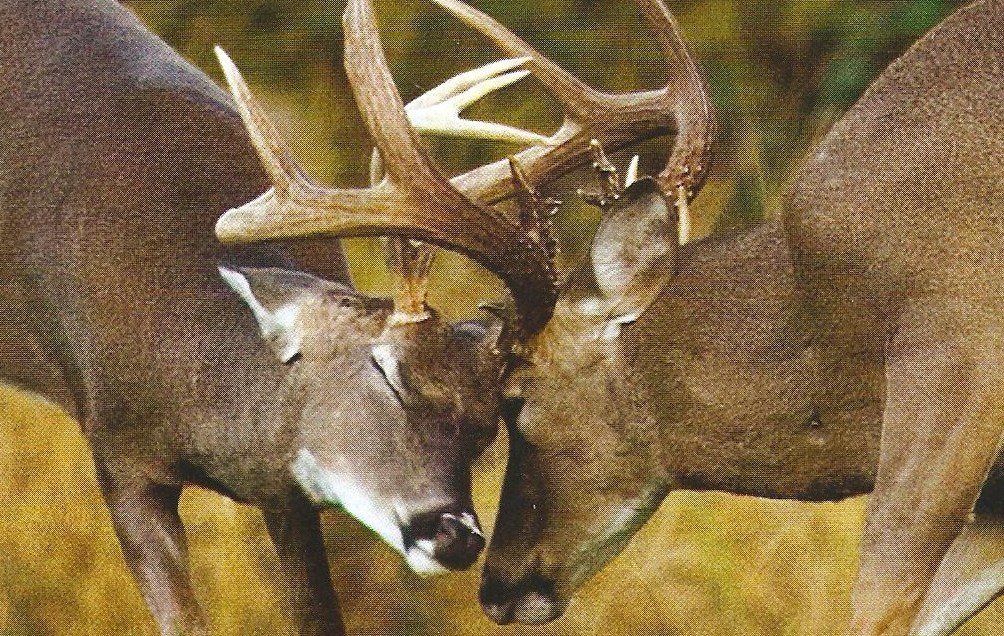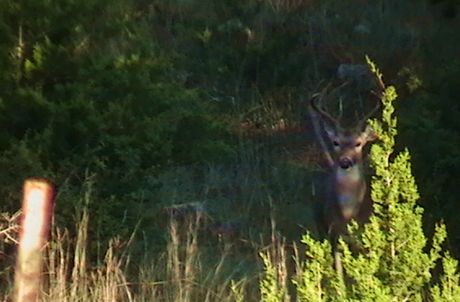Fall is here, food plots are in the ground and the deer hunting seasons are underway. Except for conducting a couple of controlled burns in the near future, the only thing left to do deer management wise for me is to harvest and record the deer we need (or would like) to remove. Though most deer hunters hunt whitetail by setting up over a food source, whether it be a feeder or a food plot, there are much more active ways to bag a buck.
When it comes to hunting there really are only two ways to go: Either you can go to the deer, or you can bring the deer to you.

Rattling for Bucks
Though many hunters have read about rattling bucks in, or have at least seen it on TV, many have yet to give this method of hunting a serious shot. Or maybe you tried it once, but didn’t feel confident, it didn’t work so you packed it in. Ratting for bucks can work, especially if you incorporate the technique into your hunting on a regular basis.
I suspect many deer hunters have picked up a set of shed or cut-off antlers and have at attempted to rattle up a buck, but their lack of success caused them to quickly dismiss the effectiveness of antler rattling. Those antlers then went back to collecting dust at camp. So as effective as rattling can be for whitetail, most of time it will not work and you are not going to bring in a buck on a string. It does work, however, and when it’s hot, it’s hot!
Best Time to Rattle?
Rattling can work at any time during the hunting season, but it is typically most effective just prior to the rut, during the pre-rut. At this time, antler rattling can be an effective way to bring whitetail bucks right up into spitting distance. I’ve seen bucks come running out of the brush with as little as two seconds worth of antler rattling!
Of course many, many times I’ve rattled antlers together only to attract the attention of area squirrels, or even worse, nothing at all. During the pre-rut, bucks are busy establishing dominance for breeding purposes, setting up territories, and working off an excess in testosterone. It is also during this time in which they are most vulnerable to rattling, so this is the BEST time to rattle.
Rattling Antlers Attracts Attention
When it comes to rattling, let me tell you that you never really know what you are going to attract. I’ve had all sorts of deer respond to rattling. I can only guess they all want to run over and see who is fighting — and who will win? Some bucks want to participate, some are just curious. I’ve had does, spikes, middle-age bucks and mature bucks all come to a set of rattling antlers.
All age classes of bucks will respond to rattling more or less at the proportion in which they occur in the population. Younger bucks probably respond at a higher percentage overall and mature bucks probably a little less overall, but it’s not easy to measure since mature bucks are smarter. Older bucks often respond to the sound of rattling antlers by moving downwind of the action and then creeping in. Younger bucks do not always take such precaution, so there is a chance some of those more experienced bucks are detecting us before we detect them.
If a good percentage of the local buck herd is made up of young bucks, then that is probably what you will bring in. If, on the other hand, there are a good number of older bucks in the area, then you have just as a good of a chance of bringing them to you as younger-aged bucks. In fact, you probably have a much better chance of bringing them to you rather than simply sitting and waiting to see them — because they may have stayed “brushed up.”
Rattling, Battling Bucks
A friend of mine spotted a huge whitetail buck last year on public land right as the season started. The buck showed up on a couple of his game camera photos before season, but he got a glimpse of the buck the second day of archery season as the animal walked by at 200 yards. At that point, he then made it his personal mission to hunt that deer for the remainder of the season, even if it meant he ended the year with no buck at all.
To make a long story short, he hunted long and hard with no success, but one cold morning a few weeks later he decided he needed to be more aggressive. He had decided that if he didn’t change then his success rate was not going to change. The best trick in his book: try to get near the buck’s core area and rattle him up for a battle.
The right day came: Temperature perfect, wind great and he was able to rattle that buck to within 25 yards and made a perfect double-lung shot. He said after his first rattling sequence he could see the buck, which scored over 170 Boone and Crockett inches, running at him from over 400 yards! Sometimes it helps to bring them to you.
So rattling can work, but don’t expect it to work every time.

